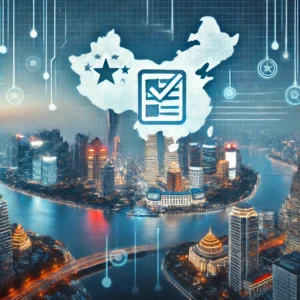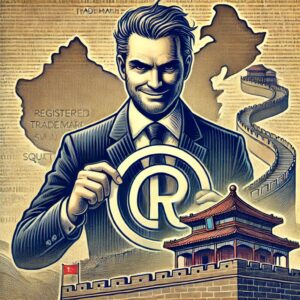Trump Trade Challenges and Adjustments
Impacts on Supply Chains and Manufacturing Locations
Implementation of a 60% tariff on Chinese imports is expected to significantly alter global supply chains. Companies relying on Chinese manufacturers face not only the financial pressures of maintaining operations but also the challenges of transitioning to alternative production bases. Exploring new locations such as Vietnam, Mexico, Thailand, and Poland can mitigate tariff impacts, but these moves often come with legal and logistical risks. Careful preparation is crucial to secure molds, protect IP, and prevent retaliatory actions such as inflated debt claims when leaving China.
Shifting Manufacturing Locations: Rising Costs and Strategic Alternatives
Many companies are exploring alternative locations such as Vietnam, Mexico, Thailand, and Poland to mitigate the impact of tariffs. Not surprisingly, our International Manufacturing lawyers are seeing a significant rise in foreign companies seeking to reduce or eliminate their reliance on China.
Smaller and mid-sized companies may struggle with relocation costs and operational strain, while larger multinational corporations with diversified supply chains are better positioned to adapt. These challenges and opportunities mirror responses to the Trump tariffs of 2018.
Domestic Manufacturing: A Double-Edged Sword
Some companies may opt to move production back to the United States, especially if tariffs extend beyond China to other countries. While this aligns with the goal of boosting domestic manufacturing, it comes with significant trade-offs. Higher labor costs and stringent regulations in the U.S. often result in increased production expenses. Businesses considering this move must carefully balance these costs against the benefits of avoiding tariffs and supporting domestic operations.
The Challenges of Leaving China
For companies choosing to exit China entirely, the process is fraught with challenges. The complexities of disengaging from Chinese manufacturers go far beyond simple logistics, encompassing legal, financial, and reputational risks. Businesses must prepare for these challenges well in advance to minimize disruption and to protect their assets.
The Risks of Leaving China
Chinese companies and individuals often take hostages to collect on debts, or to protest employee layoffs or the closing of a China facility. It is common in China for managers to be held by workers demanding back pay or other benefits, often from their Chinese owners, though occasionally also involving foreign bosses.
Our law firm advises clients who are laying off workers in China, closing a facility, or involved in a debt dispute with a Chinese entity to avoid being in or traveling to China. Regular readers of our blog will know that we have held this position firmly for years and have never wavered:
- If you are in a debt dispute with a Chinese company, the best course of action is to avoid going to China altogether.
- If travel to China is absolutely necessary, consider hiring one or more bodyguards and carefully plan where you stay and whom you meet. Exercise extreme caution in all interactions.
- Consider filing a preemptive lawsuit against your alleged creditor in a neutral jurisdiction. This may help establish that any potential detention is retaliatory rather than related to the alleged debt. If you do sue, carry proof of the lawsuit with you while in China.
These precautions are essential for safeguarding your safety and mitigating risks in these situations.
Why Discuss Debt Hostages?
At this point, you may be wondering why I’m discussing debt when the primary issue is leaving China. The reason is simple: as soon as news spreads that you plan to leave China, alleged creditors often come out of the woodwork. Chinese tax authorities may claim you owe back taxes. Your landlord might suddenly present inflated invoices. Suppliers could send bills for goods they never delivered. Employees might demand excessive severance payments or unused vacation time. These scenarios are almost inevitable, and you need to be prepared for them.
What about simply shutting down overnight and walking away, never to return? While this is technically possible, it comes with significant risks and is rarely advisable unless you are absolutely certain that neither your company nor anyone associated with it will ever conduct business in China again—or even unexpectedly find themselves there. As someone who has twice been on a plane forced to land somewhere other than its intended destination (including four unplanned January days in Magadan, Russia, where the city had almost no heating fuel), I can tell you that you should be 100% sure you will never involuntarily end up in China. For additional guidance, see How to Do Business in China Without Going to Prison.
How to Safely Decouple from Your Chinese Product Supplier
Careful planning is crucial when ending relationships with Chinese product suppliers. This includes securing your molds and any products you’ve already paid for before giving the slightest indication of your intention to move production elsewhere. Advanced preparation is essential to minimizing risks and ensuring a smooth transition.
Chinese manufacturers often retaliate against foreign buyers who cease purchasing from them. For this reason, we advise our clients to identify and line up alternative suppliers—whether within China or in another country—and have them ready to step in before signaling any plans to stop production with their current Chinese suppliers.
1. Tooling and Molds Disputes
2. Trademark Hijacking
A foreign company informs its Chinese manufacturer of its intent to stop production, only to discover that someone in China has registered the foreign company’s brand names and logos as trademarks. While the foreign company suspects its manufacturer is responsible, it often lacks evidence to prove it. As a result, the foreign company may be unable to produce its products in China under its own brand name. Worse, it may face competition from a low-cost Chinese manufacturer legally using its brand name and logo in markets where the foreign company does not hold trademark rights. To avoid this, ensure all your intellectual property (IP) is registered and current in China before disclosing any plans to scale back operations. For more, see China Trademarks: Register Yours BEFORE You Do ANYTHING Else.
3. Product Seizures
After notifying their Chinese manufacturer of plans to end the relationship, some foreign companies find their products seized at the border for alleged trademark or design patent violations. Often, these claims stem from the Chinese manufacturer registering the foreign company’s trademarks or design patents long ago and using them as leverage. While Chinese law prohibits manufacturers from registering their clients’ IP, proving these actions can be extremely difficult. To mitigate this risk, ensure your trademarks and patents are registered and up-to-date before signaling any intent to leave China.
4. Payment Disputes
Upon learning that a foreign company plans to cease production, the Chinese manufacturer may claim that the foreign company is overdue on payments, often demanding substantial sums. They may report the foreign company to Sinosure, China’s export credit agency, which can lead to Sinosure ceasing to insure the foreign company’s purchases. This, in turn, can discourage other Chinese manufacturers from doing business with the company without requiring 100% upfront payment. For more on Sinosure, and how to fight back against it, see Fighting Back Against Fake (and Real) Sinosure Claims: A Primer.
5. Hostage Situations
In extreme cases, Chinese manufacturers have threatened to or actually detained representatives of foreign companies over alleged debts. These actions put employee safety at significant risk. For more on this issue, see How to Reduce Your Chances of Getting Kidnapped in China.
To increase your chances of successfully exiting China, carefully analyze potential vulnerabilities and take proactive steps to minimize risks. Above all, plan thoroughly and maintain strict confidentiality about your intentions until you are fully prepared to make the move. Advance preparation and discretion are your best defenses against these common challenges.
Opportunities Beyond Mitigation: A Case Study in Strategic Advantage
While much of the focus in navigating shifting trade dynamics is on mitigating risks, there are significant opportunities for businesses to turn these challenges into strategic advantages. Diversification, early relocation, and fostering partnerships in emerging markets can position companies ahead of competitors, as illustrated by one of our clients.
Back in 2017, anticipating the possibility of tariffs under Trump’s administration, I had a client that made the bold decision to leave China. At the time, the client worked with nine Chinese manufacturers. Through careful planning and proactive discussions, it discovered that four of these manufacturers already had production capabilities in other countries, and two of its additional suppliers agreed to establish operations in Vietnam/Thailand to retain the client’s business and to service other product buyers looking to leave China.
By relocating early, our client secured access to top manufacturers and positioned itself ahead of competitors. When the China tariffs were enacted, this strategic advantage allowed the client to reduce costs, offer competitive pricing, and gain significant market share.
This case underscores the importance of timing and proactive strategy in leveraging trade dynamics. Companies that act early can do more than just protect themselves; they can reduce their costs and strengthen their market positions.
Mitigation Strategies for Companies Leaving China
Exiting China is more than just logistics—it’s a complex process fraught with potential disputes, retaliatory actions, and legal risks. Companies must be proactive in preparing for these challenges, as even minor oversights can lead to costly and time-consuming complications. Whether it’s safeguarding your assets, protecting your intellectual property, or managing your relationships with suppliers, careful planning is essential to minimize disruptions and ensure a smooth transition.
The following mitigation strategies provide a roadmap for companies navigating this difficult but increasingly necessary move.
- Secure Assets Before Announcing Plans: Retrieve tooling, molds, and pre-paid products before informing suppliers of plans to relocate. Agreements clarifying ownership of these assets should be in place well in advance.
- Proactively Protect Intellectual Property: Ensure that all trademarks, patents, and copyrights are registered in China before making any changes to operations. This safeguards against retaliatory trademark filings or other IP-related disputes.
- Maintain Discretion: Keep relocation plans confidential until all necessary preparations are complete to minimize retaliation from suppliers, employees, or local authorities.
- Develop Alternative Supply Chains: Establish relationships with new suppliers in other regions before exiting China to ensure a smooth transition and avoid disruptions in production.
- Plan for Legal Disputes: Anticipate potential claims from suppliers, landlords, or employees, and prepare to address these disputes with evidence and legal support. In some cases, initiating a preemptive lawsuit in a neutral jurisdiction may deter retaliatory actions.
Conclusion: Preparing for a Turbulent Trade Environment
The evolving trade dynamics under President Trump’s second term present both challenges and opportunities for businesses worldwide. The introduction of aggressive tariffs and shifting supply chain realities demands careful planning, strategic foresight, and a willingness to adapt to new market conditions. Companies that can proactively assess risks, protect their assets, and explore alternative markets will be better positioned to weather the storm of global trade volatility.
While the road ahead is uncertain, it is not insurmountable. Businesses that embrace flexibility and innovation can turn potential disruptions into opportunities for growth and resilience. By leveraging the strategies outlined in this post and maintaining a forward-looking perspective, companies can navigate the complexities of U.S. trade policy while safeguarding their operations and market positions. With the right preparation and mindset, these challenges can serve as a catalyst for transformation and long-term success.

























